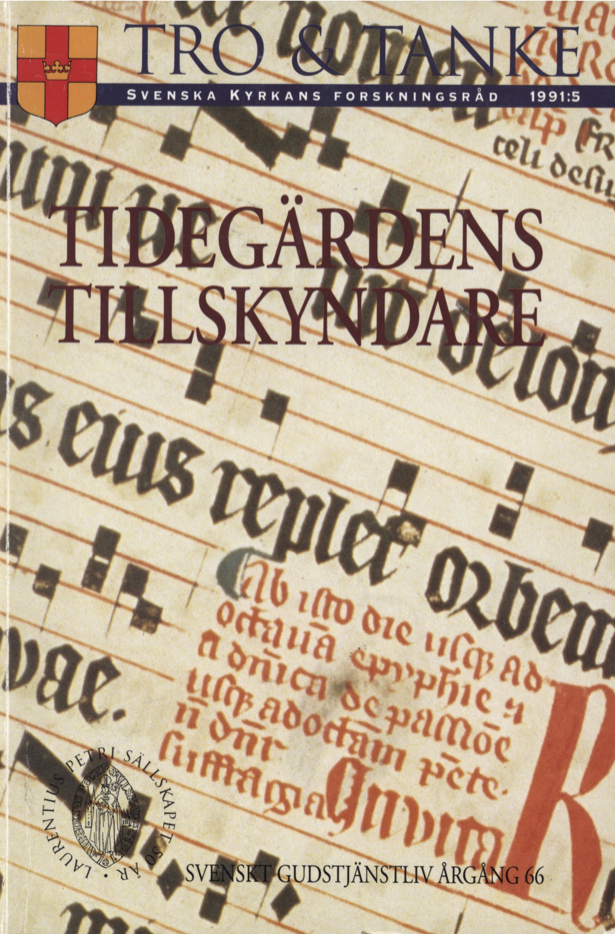Laurentius Petri och den liturgiska utvecklingen i Svenska kyrkan under 1900-talet - normativ förebild eller statussymbol
Abstract
Within 20th century liturgical renewal in the Church of Sweden, reference is often made to Laurentius Petri, its first evangelical Archbishop. Two important investigations have strongly contributed to this, namely on the one hand Edward Rodhe’s studies in Swedish liturgical tradition during the epoch of the Reformation, Studier i den svenska reformationstidens liturgiska tradition, 1917, and on the other hand Yngve Brilioth’s Nattvarden i evangeliskt gudstjänstliv, 1926 (Eucharistie Faith and Practice, Evangelical and Catholic, 1930). In neither of these two books, however, is the Archbishop held forth as a normative model for contemporary liturgical renewal.
Rodhe’s work is strictly historical, making no proposals whatsoever for actual liturgical work; it objectively presents and analyses a number of 16th century song-books bearing witness of the maintenance of medieval office tradition under the supervision o f Laurentius Petri. This material became a great source of inspiration for those who wanted to renew the office of hours and the Gregorian chant, above all for Arthur Adell and Knut Peters as well as the Laurentius Petri Society formed by them.
Brilioth’s book did culminate in a couple of proposals for actual liturgical reform; but these proposals were not based upon Laurentius Petri or any strict Lutheran position. Brilioth rather stressed common Christian liturgical heritage and i.a. proposed that the form of eucharistic prayer given by Luther and Laurentius Petri should be changed to conform with Early Church and contemporary ecumenical traditions. Others were, however, especially inspired by the material on Laurentius Petri presented by Brilioth, e.g. Gunnar Rosendal.
If Rodhe’s and Brilioth’s books have indirectly contributed to a certain Laurentius Petri renaissance in Sweden in connection with modern liturgical strivings, this should not be understood as though Laurentius Petri has been the main source o f inspiration for these endeavours. Strivings for a liturgical renewal of the office as well as of the eucharist broke forth strongly on the international and ecumenical arena during the 20s and 30s. The development has followed rather a similar path even in evangelical churches whose history offered no Laurentius Petri, or corresponding person, as a model for actual strivings. It should also be noted that the part of Laurentius Petri’s strivings especially held forth within the liturgical movement concerns his maintenance of medieval liturgical tradition. The Archbishop was, however, also a reformer who, e.g., stressed that all liturgy be centered around Christ, and therefore he wanted to eradicate nearly the whole sanctorale. But to a certain extent even the sanctorale was restored within the liturgical movement, starting with Gustaf Lindbergs study of the liturgical year, Kyrkans heliga år, 1937. This shows that the role played by Laurentius Petri in modem strivings for liturgical renewal has been less that of a normative than of a status-enhancing model.
Downloads
Publicerad
Nummer
Sektion
Licens
© författarna, Laurentius Petri Sällskapet för svenskt gudstjänstliv samt Artos & Norma bokförlag. Det är tillåtet att kopiera och använda material ur Svenskt Gudstjänstliv för forskningsändamål om källan anges. För övriga ändamål kontakta respektive artikelförfattare samt förlaget. Särskilda restriktioner kan gälla för bildmaterial.


